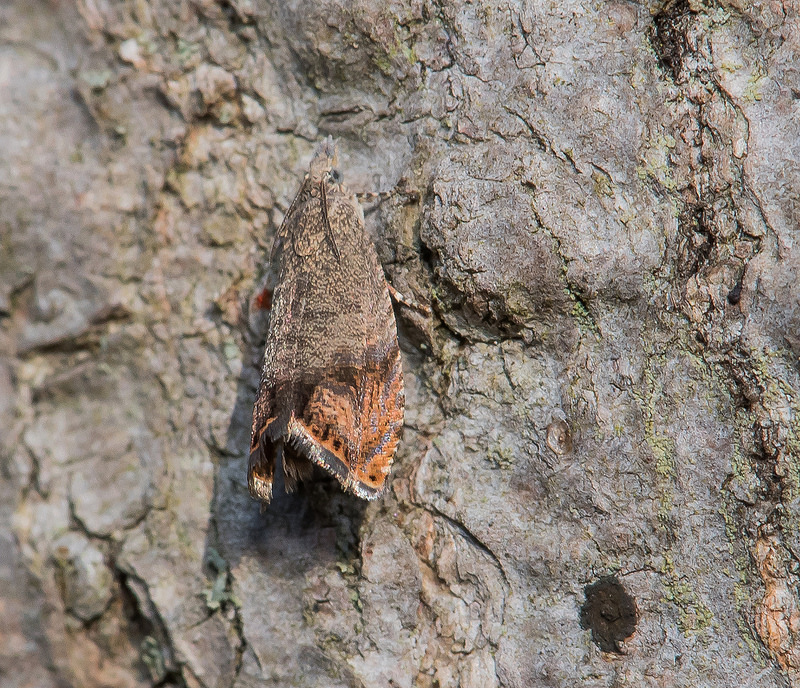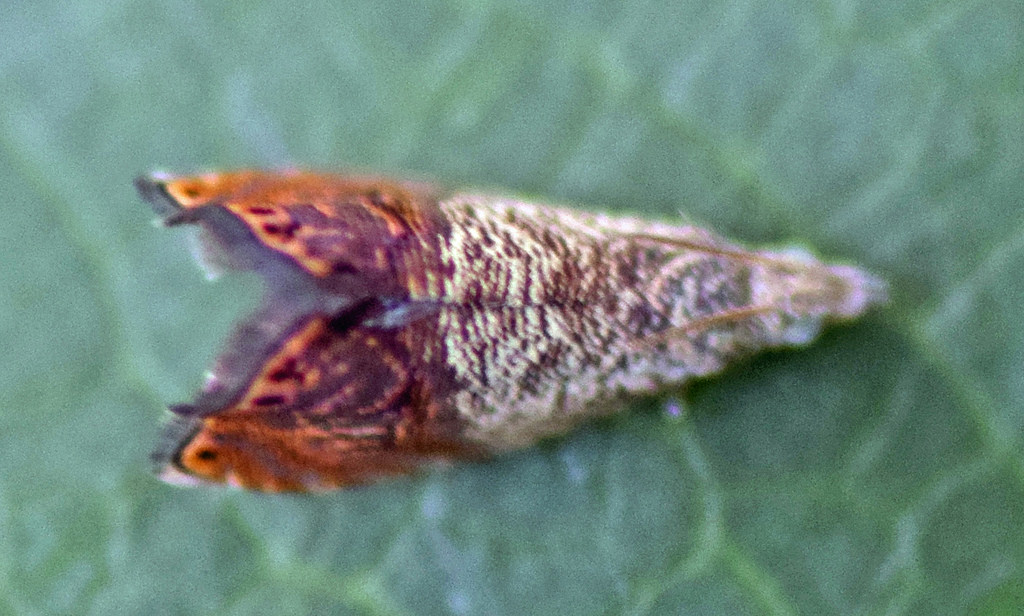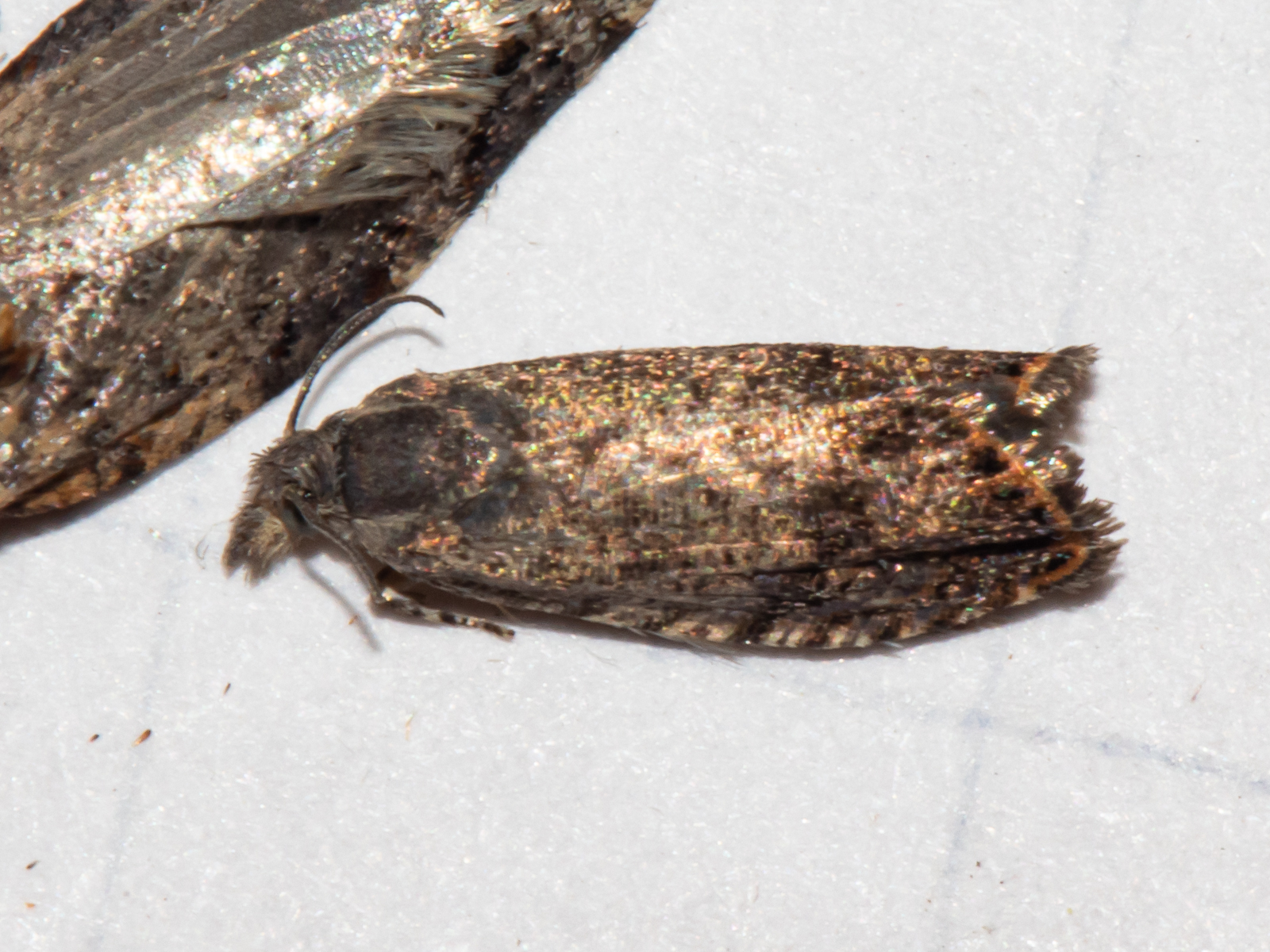Map Snapshot







35 Records
Relationships
Host plant is Pawpaw (Database of the World's Lepidopteran Hostplants ).
Seasonality Snapshot
Source: Wikipedia
| Talponia plummeriana | |
|---|---|

| |
| Scientific classification | |
| Domain: | Eukaryota |
| Kingdom: | Animalia |
| Phylum: | Arthropoda |
| Class: | Insecta |
| Order: | Lepidoptera |
| Family: | Tortricidae |
| Genus: | Talponia |
| Species: | T. plummeriana
|
| Binomial name | |
| Talponia plummeriana | |
| Synonyms | |
| |
Talponia plummeriana, the speckled talponia moth or pawpaw peduncle borer, is a moth of the family Tortricidae. It is native to the southeastern United States.
The wingspan is about 9–10 millimetres (23⁄64–25⁄64 in). Adults are powdery gray along thorax and basal half of fore wing; hind wing and outer half of fore wing is purplish brown.[1][2]
The larvae feed on Asimina species, particularly Asimina triloba, the common pawpaw. T. plummeriana is one of the few species capable of surviving the elevated level of annonacin found in pawpaws. Feeding takes place when larvae bore into the peduncle of the pawpaw flower, causing the flower to drop and thereby decreasing fruit yield.[3][4] While more typically documented in the peduncle of the flower, larvae have been observed burrowing into the fruit of the pawpaw.[5] The larvae are occasionally consumed by insectivorous birds such as the golden-winged warbler.[6]
T. plummeriana may be found throughout the native range of the pawpaw. It was first described from a specimen collected at Plummers Island, Maryland and was named for its type locality.[2]
References
[edit]- ^ a b Busck, August (1906). "Notes on Some Tortricid Genera". Proceedings of the Biological Society of Washington. XIX: 181–82. Retrieved July 15, 2022.
- ^ a b Heinrich, Carl (1926). "Revision of the North American Moths of the Subfamilies Laspeyresiinae and Olethreutinae". Bulletin of the United States National Museum (132): 19. doi:10.5479/si.03629236.132.1. hdl:2027/uiug.30112106907741. ISBN 978-0-598-36942-0. Retrieved July 15, 2022.
- ^ Ames, Guy K. (January 8, 2018). "Pawpaw – A "Tropical" Fruit for Temperate Climates". Small Farms Quarterly. Cornell Small Farms Program. Archived from the original on July 12, 2022. Retrieved July 15, 2022.
- ^ Webber, Mark A. (January 4, 2022). "Tree of the Month: Paw Paw". Ohio Chapter ISA. Archived from the original on July 15, 2022. Retrieved July 15, 2022.
- ^ Sedlacek, John D.; Lowe, Jeremiah D.; Pomper, Kirk W.; Friley, Karen L.; Crabtree, Sheri B. (Fall 2012). "The Pawpaw Peduncle Borer, Talponia plummeriana Busck (Lepidoptera: Tortricidae): A Pest of Pawpaw Fruit". Journal of the Kentucky Academy of Science. 73 (2): 110–112. doi:10.3101/1098-7096-73.2.110. Retrieved July 15, 2022.
- ^ Nelson, A. L. (October 1933). "Golden-winged Warbler Feeding on Larvae of Talponia Plummeriana". The Auk. 50 (4): 440–441. doi:10.2307/4077622. JSTOR 4077622. Retrieved July 15, 2022.







